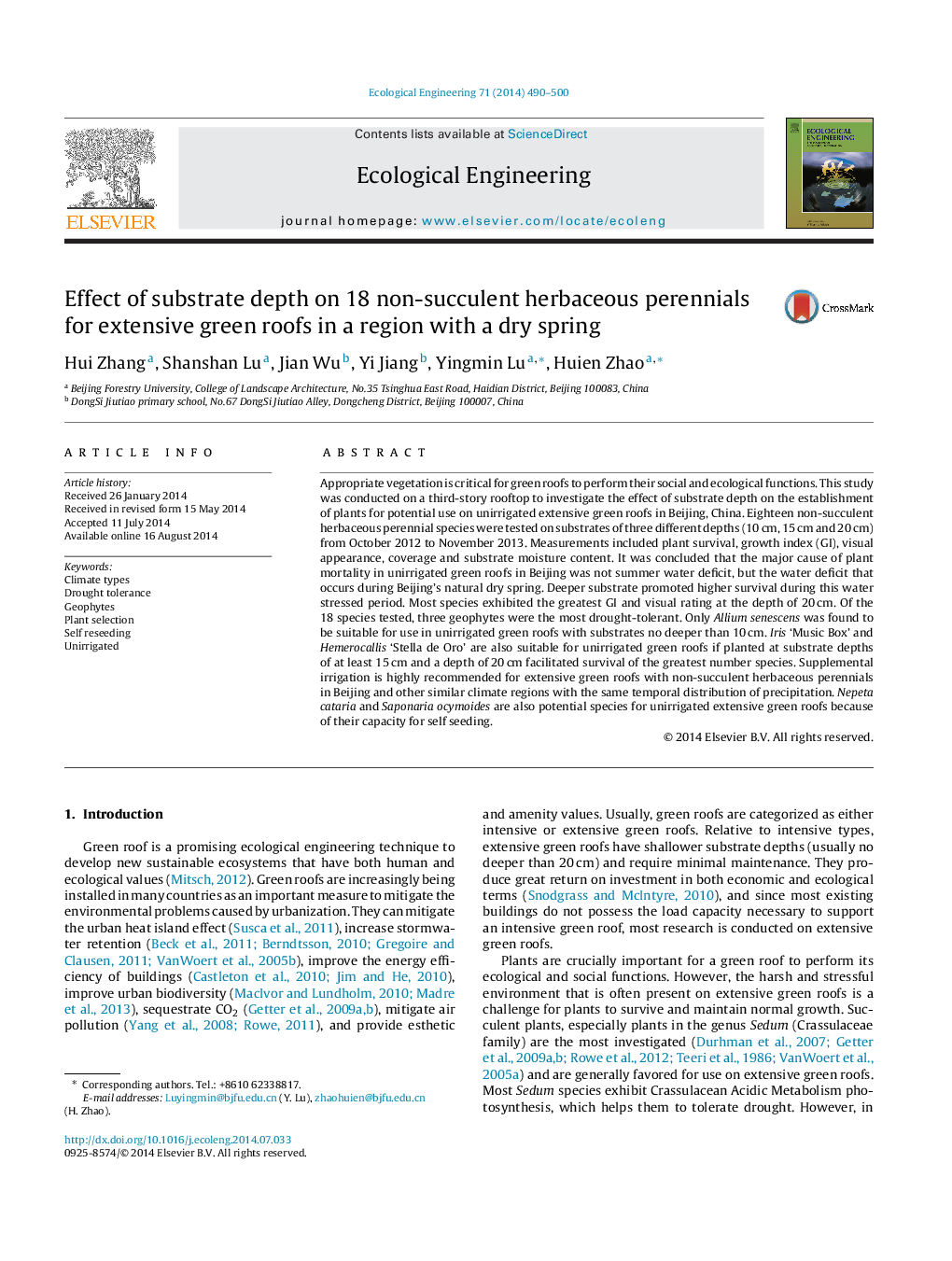| Article ID | Journal | Published Year | Pages | File Type |
|---|---|---|---|---|
| 4389188 | Ecological Engineering | 2014 | 11 Pages |
Abstract
Appropriate vegetation is critical for green roofs to perform their social and ecological functions. This study was conducted on a third-story rooftop to investigate the effect of substrate depth on the establishment of plants for potential use on unirrigated extensive green roofs in Beijing, China. Eighteen non-succulent herbaceous perennial species were tested on substrates of three different depths (10Â cm, 15Â cm and 20Â cm) from October 2012 to November 2013. Measurements included plant survival, growth index (GI), visual appearance, coverage and substrate moisture content. It was concluded that the major cause of plant mortality in unirrigated green roofs in Beijing was not summer water deficit, but the water deficit that occurs during Beijing's natural dry spring. Deeper substrate promoted higher survival during this water stressed period. Most species exhibited the greatest GI and visual rating at the depth of 20Â cm. Of the 18 species tested, three geophytes were the most drought-tolerant. Only Allium senescens was found to be suitable for use in unirrigated green roofs with substrates no deeper than 10Â cm. Iris 'Music Box' and Hemerocallis 'Stella de Oro' are also suitable for unirrigated green roofs if planted at substrate depths of at least 15Â cm and a depth of 20Â cm facilitated survival of the greatest number species. Supplemental irrigation is highly recommended for extensive green roofs with non-succulent herbaceous perennials in Beijing and other similar climate regions with the same temporal distribution of precipitation. Nepeta cataria and Saponaria ocymoides are also potential species for unirrigated extensive green roofs because of their capacity for self seeding.
Related Topics
Life Sciences
Agricultural and Biological Sciences
Ecology, Evolution, Behavior and Systematics
Authors
Hui Zhang, Shanshan Lu, Jian Wu, Yi Jiang, Yingmin Lu, Huien Zhao,
